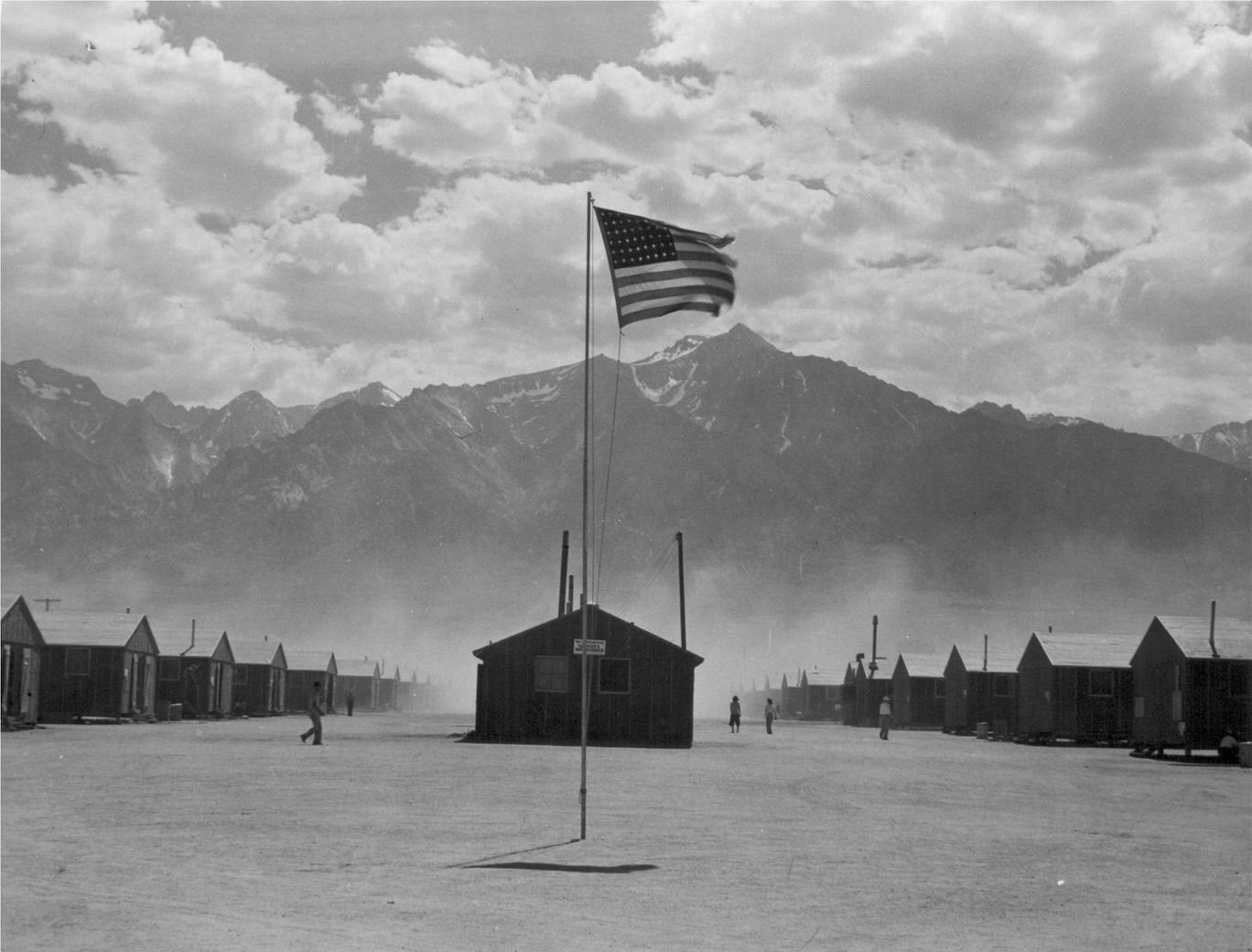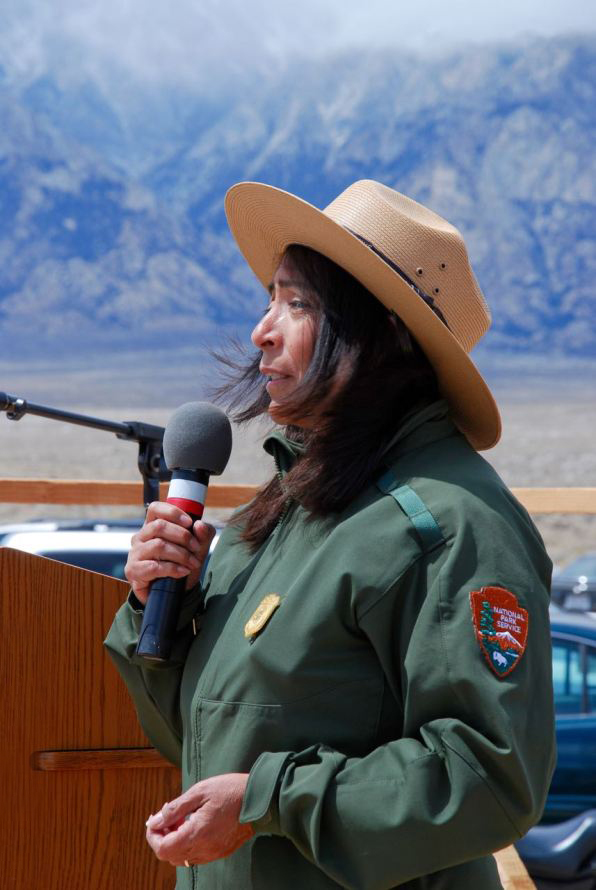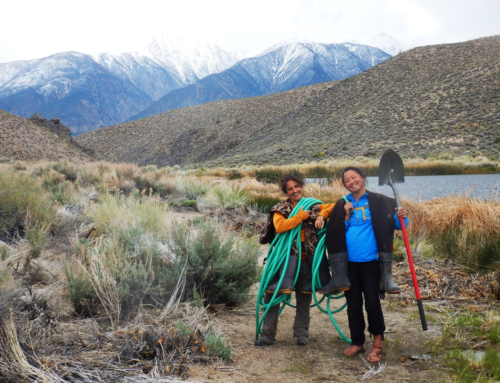In 1942, the United States government ordered more than 110,000 men, women, and children to leave their homes. They were detained in remote, military-style camps one of which was right here in the Eastern Sierra: the Manzanar War Relocation Center, where Japanese American citizens and resident Japanese aliens were interned during World War II.

The Manzanar National Historic Site is a stirring reminder of the impact that war, fear, and prejudice can have on our country and our shared legacy. Photo © Dorothea Lange.

Bernadette Johnson, Superintendent of the Manzanar National Historic Site, will join ESLTon August 2 to share stories from Manzanar’s past. Photo: Mark Kirchner, © 2015 Manzanar Committee.
Manzanar is a part of our nation’s past that many have tried to sweep under the rug. And yet there are countless stories baked into the dirt beneath the tall white monument that now stands at the Manzanar National Historic Site: stories of the Native Americans who lived there first; stories of the orchards and ranches that once filled the valley; stories of the Japanese Americans who were forced from their homes and imprisoned there, in the vast and unforgiving desert.
On Tuesday August 2,Bernadette Johnson, Superintendent of the Manzanar National Historic Site, will share many of these stories when she joins Eastern Sierra Land Trust for ourmonthly Brown Bag Lunch speaker series. This free event is open to the public, and will be held in ESLT’s backyard at 250 N. Fowler Street in Bishop from 12 1pm. No advance reservations are required.
In honor of Inyo County’s 150thbirthday, speakers and guests have joined ESLT all summer long to share and hear informative, entertaining tales about the colorful history of our remote region. Brown Bag Lunch guests are encouraged to bring lunchand sunglasses; to learn more, contact Catherine Tao, ESLT Education Coordinator and AmeriCorps Member, ator(760) 873-4554.






